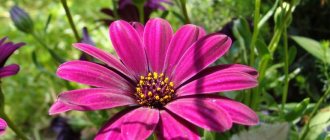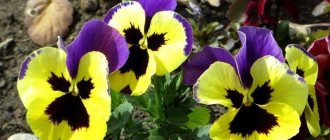The ground cover plant Veronica has from 300 to 500 species. It is distributed throughout the world, including the Arctic. The Veronica genus includes Red Book, medicinal, ornamental and weed plants. Let's try to figure out whether it is a flower or a weed.
It often happens when a plant taken from nature for use in landscape design becomes an “aggressor”. This happened, for example, with Canadian goldenrod, brought to English gardens from North America. The same can be said about some types of speedwell. This primarily applies to veronica filamentosa, ivy-leaved, field, modest and Persian.
general information
Previously, Veronica was classified as a separate family, but now it has been proven that it belongs to the plantain family. Moreover, this is the most numerous and diverse representative of them. In the garden, Veronica is good in mono plantings and together with other bright flowers.
It is simply impossible to collect a single general description of this genus. There are small herbaceous annuals, and there are tall subshrubs with woody shoots. Leaves and shoots are most often narrow and pubescent, with a grayish tint.
Small delicate buds are collected in long spikelets, and less often - in panicles and umbrellas. Graceful pointed petals look very beautiful and neat. The structure of the rhizome completely depends on the growing conditions - on fertile soils, near water or in rocky areas.
Photo: avsycheva-landscape-design.ru
Useful qualities
The medicinal properties of the plant have been known since ancient times. Veronica has long been used as a remedy to cure various diseases.
Of particular value are the tops of the stems with leaves and inflorescences . Harvesting is carried out with the onset of summer, when flowering is at its peak. Drying time must be reduced to a minimum, for which a temperature regime of forty degrees is created. This allows you to reduce losses and preserve the color shade. If everything is done correctly, Veronica will retain its healing properties for two years.
In addition, it is used as an ornamental plant to decorate the garden area.
Veronica is grown today in any type of soil composition. But the plant feels best on loamy soil. It requires a sufficient amount of light, although shaded areas are suitable for breeding.
Types of speedwell
The genus of Veronica is truly huge: more than 300 species of this plant. They are distributed throughout the world, and almost half of them are found in Russia. Let's look at the most popular ones!
Oak speedwell
Found in forests and fields. Bushes up to 40 cm high are covered with loose inflorescences with rather large blue buds - up to 1 cm each.
Photo: zhvnature.blogspot.com
Medicinal Veronica
It is what is traditionally used in folk medicine, and it also makes spectacular ground cover mats. Medicinal speedwell grows on the poorest sandy soils.
Photo: sventameat.ru
Armenian speedwell
Dense but compact perennial with numerous lying shoots up to 10 cm in length. It has feathery, dissected leaves and lilac or blue buds.
Photo: kashtandesign.ru
Gentian speedwell
Medium-sized variety up to 45 cm with beautiful leafy rosettes. The peduncles themselves are almost twice as tall, with multi-flowered spike-shaped inflorescences of white color.
Photo: flowers-flora.ru
thread speedwell
One of the most aggressive species that can easily grow throughout the entire garden. It takes root with all its parts simply upon contact with the ground.
Photo: nn.ru
Big Veronica
A tall variety up to 70 cm high with fleecy single shoots and a powerful rhizome. The large speedwell has spectacular spikelets of inflorescences, and it also winters well even in Siberia.
Photo: flickr.com
Spike speedwell
This species is characterized by amazing color diversity. In addition to blue and blue varieties, white, pink and purple are very common. The height of spikelet veronica is up to 40 cm.
Photo: zen.yandex.ru
Flower Hazel grouse (50 photos): types, planting and care in open ground
Description of the plant
The genus Veronica is very diverse and includes inconspicuous, creeping herbaceous plants, tough perennials and large shrubs, so there is plenty to choose from. The plant belongs to the plantain family (Plantaginaceae). In its natural environment it is found throughout almost all of Europe and Asia, in regions with temperate climates. This is a popular garden plant in our country. Most speedwells are unpretentious and easy to grow, suitable even for novice gardeners.
The Latin name was given to the plant in 1542 by the German botanist Leonard Fuchs in honor of Saint Veronica. Veronica also has many other names, including folk ones - snake, Andreev's grass, plakun-grass, snake grass, cyanosis, goat's muzzle.
The genus Veronica contains more than 250 species with different needs and appearance and is widespread in many regions of the Northern Hemisphere. Depending on the type, plants can reach a height of 10 to 200 cm. Variegated flowers can grow singly in the axils of the leaves or form loose or dense clusters. Flowering times also differ from one species to another:
- high varieties bloom in July and remain until frost;
- low – from spring to late summer.
Speedwells are valuable honey plants.
Caring for Veronica
The specifics of caring for Veronica completely depend on the specific species, or more precisely, on the conditions of its growth in nature. But we tried to systematize the information and come up with general recommendations!
Temperature and lighting
Spiked and large veronica prefer the sun, while forest and oak species grow better in partial shade. Almost all of them are equally resistant to heat and frost. In nature, Veronica prefers a temperate or cool climate.
Photo: fermer.ru
Watering
Veronica does not need additional watering and easily tolerates drought. Only if the dry season is too long can you water the planting a little several times. Moisture-loving species include species that live in water, as well as spikelet and gentian speedwell.
Photo: marusin-sad.com
The soil
Mountain and rocky species grow best on rocky soils. Medicinal and longleaf plants prefer fertile soil. Oak and forest trees need good drainage and low acidity. Sandy loam and loam are also suitable.
Photo: baumschule-horstmann.de
Fertilizers and fertilizing
If the site is chosen correctly, fertilizing for Veronica is not needed at all. If the soil is too poor and scarce, you can apply fertilizer literally once a season.
Photo: look.com.ua
Wintering
Perennial speedwell does not need shelter for the winter, even in our latitudes. It easily tolerates frosts down to -30 degrees, and generally feels great in the northern hemisphere.
Photo: wiki2.org
Calendula (50 photos): types, planting and care in open ground
Growing Tips
It is possible to constantly admire the beauty of a plant and inhale the wonderful aroma emanating from it if you take into account the following techniques and little tricks:
- To ensure that Veronica blooms last as long as possible, it is recommended to thin out the inflorescences. This must be done as carefully and carefully as possible, avoiding damage to neighboring shoots, and without getting carried away by destroying a large number of buds;
- An excellent technique to ensure long-term appearance of flowers is to combine several plant varieties when planting, taking into account different flowering times;
- To use water sparingly, maintain soil moisture and control weed growth, experienced gardeners recommend periodically acidifying the soil. Such measures will not only fulfill these tasks, but will also benefit the plant, which responds well to slightly acidic soil;
- the volume of flowering can be increased with the help of a little trick - after the first branches appear on the stems, you should sharply reduce the amount of watering, while preventing the soil from drying out;
- to improve the flowering process, the plant should be fed in moderation, focusing on potassium (once a year) and nitrogen fertilizers (during the growing season);
- To prevent the crop from going wild and losing its delightful appearance, it is necessary to constantly remove weeds;
It is recommended to subject the Veronica flower to rejuvenating procedures every 5 years, dividing the bush into several parts according to the developed instructions with attached photo-step-by-step actions.
Planting and propagation of Veronica
The easiest way to propagate an adult healthy bush is by division in early spring. Young cuttings are rooted in sand or peat under a jar, and then transplanted into the garden at a distance of 30-50 cm.
Young tops take root in moist soil in partial shade. This is done in the summer, and the length of the cuttings is 10 cm. The seeds are sown in open soil at the end of autumn, but such bushes will bloom in a year. Otherwise, there are no more tricks or secrets here at all.
Photo: sventameat.ru
Pest and disease control
Sometimes Veronica suffers from powdery mildew, but fungicides help. It is more difficult with ring spot, which is transmitted to certain species from raspberries. This is a virus, and the affected plant must be removed as soon as possible.
Veronica leaves are eaten by different types of caterpillars - cutworms, moths, and garden moths. But more dangerous enemies are aphids and nematodes, which multiply rapidly. Special nematicides are used against nematodes, and complex insecticides help against all other pests.
Photo: pt.wikipedia.org
Helenium (50 photos): types, care and planting in open ground
Veronica flower – photo
We advise you to first decide what you need flowers for, and then choose the appropriate type of veronica. Different varieties are good for rock gardens, rockeries, flowering carpets, pond decoration and even for tall vertical accents.
Photo: za.pinterest.com
Photo: ravaka.ru
Photo: photocentra.ru
Photo: saglikfit.com
Photo: kupivsp.ru
Photo: fotokto.ru
Photo: fotokto.ru
Photo: fotokto.ru
Photo: freundeskreis-botanischer-garten-rombergpark.org
Photo: zen.yandex.ru
Photo: pinterest.ru
Photo: zminu.com
Photo: na-dache.pro
Photo: oir.mobi
Photo: molbiol.ru
Photo: zen.yandex.ru
Photo: zen.yandex.ru
Photo: zminu.com
Photo: mycoweb.ru
Photo: sadik.tomsk.ru
Photo: commons.wikimedia.org
Photo: 7ogorod.ru
Photo: unipack-ug.ru
Photo: sventameat.ru
Did you like the post? Subscribe to our channel in Yandex.Zen, it really helps us in our development!











